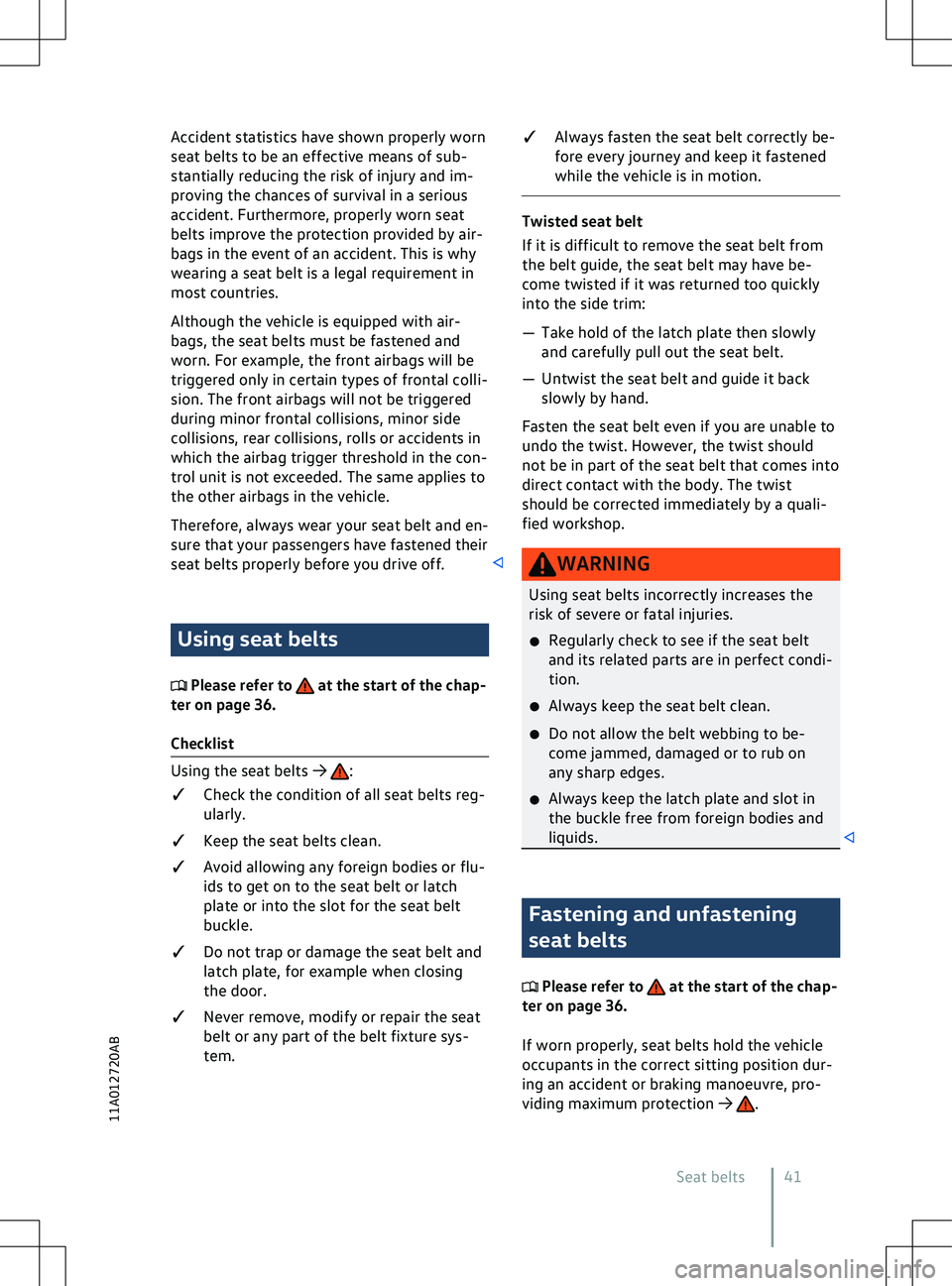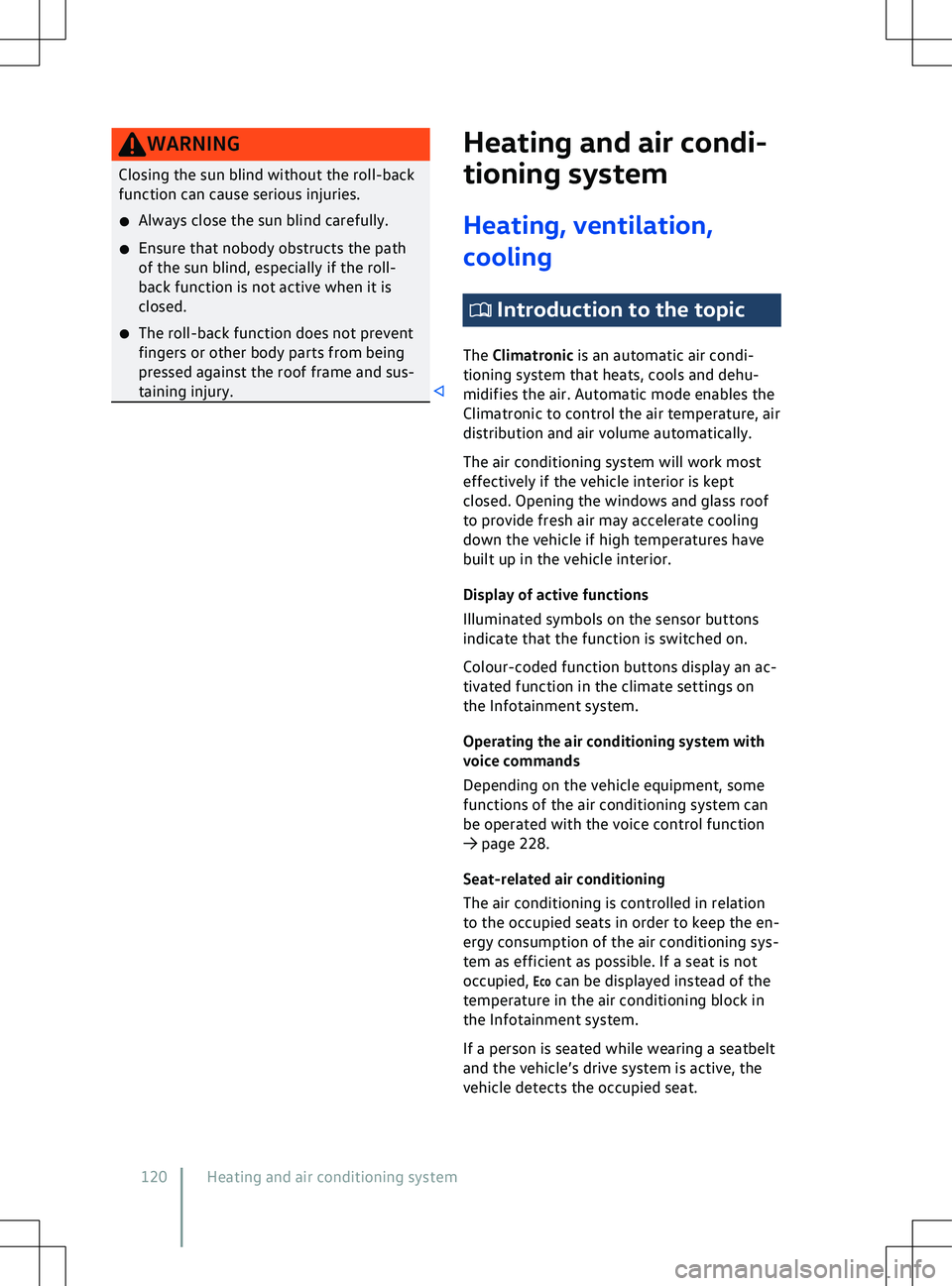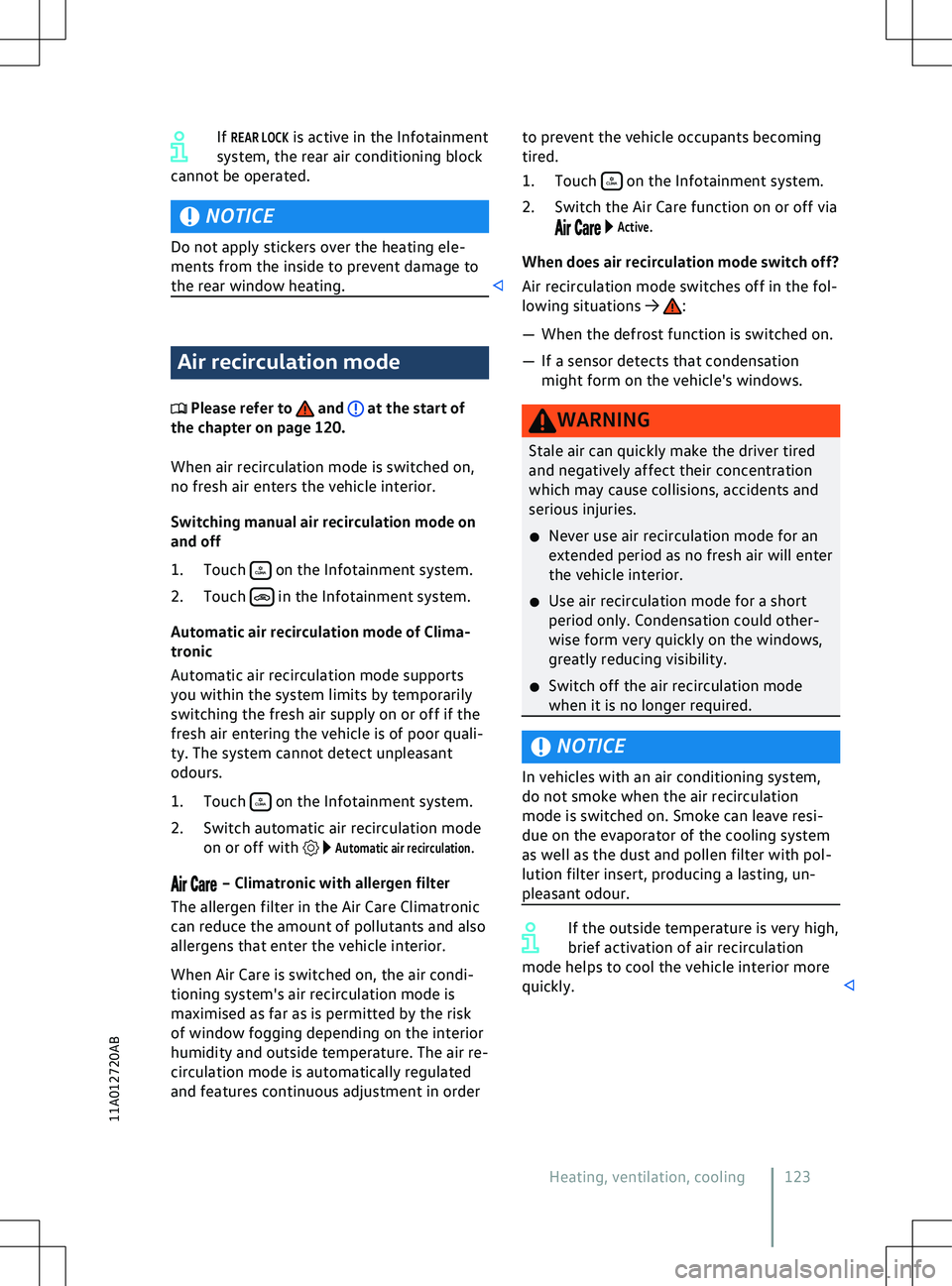Page 28 of 417

tional sign in the head-up display and in the
instrument cluster.
Displays
In addition to speed limits and o
vertaking re-
strictions, Dynamic Road Sign Display also
detects the road sign which indicates that all
restrictions have been lifted on motorways
and main roads in Germany. In all other coun-
tries in which the system is operated, the
current speed limit is displayed instead.
The road signs detected by the Dynamic Road
Sign Display system are displayed on the in-
strument cluster. Road signs may also be dis-
played in the Infotainment system, depend-
ing on the system installed in the vehicle.
With some equipment levels, a display is also
shown on the Head-up Display.
The system is in the initial-
isation phase. OR: the camera has not
detected any regulatory or warning
signs.
System fault. Go to
a qualified workshop.
Fault in the Dy-
namic Road Sign Display system
speed warning. Go to a qualified
workshop.
The
windscreen is dirty in the area of the
camera or the camera view is im-
paired due to the weather conditions.
Clean the windscreen.
No data
transmission from the Infotainment
system. Check whether valid map da-
ta is loaded in the Infotainment sys-
tem. OR: the vehicle is located in an
area that is not covered by the map
stored in the Infotainment system.
Dynamic Road Sign Display is
not supported in the country in which
you are currently travelling.
No road signs available.
Error: Dynamic Road Sign Display
Speed warning currently not available.
Dynamic Road Sign Display: Clean the windscreen!
Dynamic Road Sign Display is currently restricted.
No data available.
Display of road signs Fig. 16
In the instrument cluster display: e
xam-
ple of recognised speed limits with generic addi-
tional sign.
After validation and evaluation of the infor-
mation from the camera, the Infotainment
system and the current vehicle data, the Dy-
namic Road Sign Display shows up to two
valid road signs and one generic additional
sign
Page 43 of 417

Accident statistics have shown properly worn
seat belts to be an eff
ective means of sub-
stantially reducing the risk of injury and im-
proving the chances of survival in a serious
accident. Furthermore, properly worn seat
belts improve the protection provided by air-
bags in the event of an accident. This is why
wearing a seat belt is a legal requirement in
most countries.
Although the vehicle is equipped with air-
bags, the seat belts must be fastened and
worn. For example, the front airbags will be
triggered only in certain types of frontal colli-
sion. The front airbags will not be triggered
during minor frontal collisions, minor side
collisions, rear collisions, rolls or accidents in
which the airbag trigger threshold in the con-
trol unit is not exceeded. The same applies to
the other airbags in the vehicle.
Therefore, always wear your seat belt and en-
sure that your passengers have fastened their
seat belts properly before you drive off. Using seat belts
Please refer to at the start of the chap-
ter on page 36.
Checklist :
�q Check the condition of all seat belts reg-
ularly.
�q Keep the seat belts clean.
�q A
void allowing any foreign bodies or flu-
ids to get on to the seat belt or latch
plate or into the slot for the seat belt
buckle.
�q Do not trap or damage the seat belt and
latch plate, for example when closing
the door.
�q Never remove, modify or repair the seat
belt or any part of the belt fixture sys-
tem. �q
Always fasten the seat belt correctly be-
f
ore every journey and keep it fastened
while the vehicle is in motion. Fastening and unfastening
seat belts
Please refer to at the start of the chap-
ter on page 36.
If worn properly, seat belts hold the v
ehicle
occupants in the correct sitting position dur-
ing an accident or braking manoeuvre, pro-
viding maximum protection
Page 122 of 417

WARNING
Closing the sun blind without the roll-back
function can cause serious injuries.
�x Always close the sun blind carefully.
�x Ensure that nobody obstructs the path
of the sun blind, especially if the roll-
back function is not activ
e when it is
closed.
�x The roll-back function does not prevent
fingers or other body parts from being
pressed against the roof frame and sus-
taining injury. Introduction to the topic
The Climatronic is an automatic air condi-
tioning system that heats, cools and dehu-
midifies the air. Automatic mode enables the
Climatronic to control the air temperature, air
distribution and air v
olume automatically.
The air conditioning system will work most
effectively if the vehicle interior is kept
closed. Opening the windows and glass roof
to provide fresh air may accelerate cooling
down the vehicle if high temperatures have
built up in the vehicle interior.
Display of active functions
Illuminated symbols on the sensor buttons
indicate that the function is switched on.
Colour-coded function buttons display an ac-
tivated function in the climate settings on
the Infotainment system.
Operating the air conditioning system with
voice commands
Depending on the vehicle equipment, some
functions of the air conditioning system can
be operated with the voice control function
Page 123 of 417

WARNING
Poor visibility through the door windows,
windscreen and rear window increases the
risk of collisions and accidents which can
cause serious injuries.
�x Keep all door windows, the windscreen
and the rear window free from ice, snow
and condensation to maintain perf
ect
visibility.
�x Adjust the heating, air conditioning and
rear window heating to prevent conden-
sation from forming on the windows.
�x Only set off once all windows are clear.
�x Use air recirculation mode for a short
period only. Condensation could other-
wise form very quickly on the windows,
greatly reducing visibility.
�x Switch off the air recirculation mode
when it is no longer required. NOTICE
Food, medicine and other items that are sen-
sitiv
e to heat or cold could be either dam-
aged or rendered useless by the air flowing
out of the vents.
�x Never leave food, medicines or other tem-
perature-sensitive objects in front of the
vents. NOTICE
If the air conditioning system is not working,
switch the air conditioning system off imme-
diately and ha
ve it checked by a qualified
workshop. This can help to prevent secondary
damage. Overview of functions
Please refer to and at the start of
the chapter on page 120.
Some functions of the air conditioning sys-
tem and menus in the Inf
otainment system as well as an air conditioning block for the
rear seats depend on the equipment le
vel.
In the Infotainment system Open the air conditioning settings in
the Infotainment system.
In the Infotainment system: upper screen
edge
Switch the air conditioning system on
and off.
In the Infotainment system: lower screen
edge Select temperature. Depending on the
equipment level, you can set the tem-
perature directly in the Infotainment
system or use the touch sliders be-
neath the Infotainment system. The
selected temperatures are displayed
at the bottom of the screen in the In-
fotainment system.
The temperatures set for the rear row
of seats are shown on the displays for
the air conditioning block for the rear
seats. Adopt temperature settings of driver
side f
or all seats. Switch the seat heating on and off
Page 125 of 417

If REAR LOCK is active in the Infotainment
system, the rear air conditioning block
cannot be operated. NOTICE
Do not apply stickers over the heating ele-
ments from the inside to pre
vent damage to
the rear window heating. Air recirculation mode
Please refer to and at the start of
the chapter on page 120.
When air recirculation mode is switched on,
no fresh air enters the v
ehicle interior.
Switching manual air recirculation mode on
and off
1. Touch on the Infotainment system.
2.
Touch in the Infotainment system.
Automatic air recirculation mode of Clima-
tronic
Automatic air recirculation mode supports
you within the system limits by temporarily
switching the fresh air supply on or off if the
fresh air entering the v
ehicle is of poor quali-
ty. The system cannot detect unpleasant
odours.
1. Touch on the Infotainment system.
2.
Switch automatic air recirculation mode
on or off with
Automatic air recirculation. to prevent the vehicle occupants becoming
tired.
1.
Touch on the Infotainment system.
2.
Switch the Air Care function on or off via
Active.
When does air recirculation mode switch off?
Air recirculation mode switches off in the fol-
lowing situations
Page 128 of 417
Automatic windscreen heating is also active
when the air conditioning system is switched
off
.
Windscreen heating using the defrost func-
tion
The windscreen heating will be switched on
when the defrost function is switched on and
a sensor detects that condensation may form
on the windscreen.
When does the windscreen heating switch
off?
The windscreen heating switches itself off if
one of the following conditions is met:
Page 130 of 417
3. Set the desired temperature using and
.
Immediate air conditioning of stationary v e-
hicle
1. Switch off the ignition.
2. Touch in the exit menu in the Infotain-
ment system
Page 164 of 417
Limits of Front Assist
Please refer to at the start of the chap-
ter on page 159.
F
ront Assist is not available or its
functions are restricted immediately
after the vehicle is started. The indi-
cator lamp lights up in the instrument
cluster display during this time.
Front Assist has physical and system-related
limitations. You should therefore always be
prepared to take full control of the vehicle if
necessary.
Delayed response
If the camera or radar sensor is exposed to
environmental conditions that impair func-
tioning, the system may detect this only after
a certain delay. For this reason, any restric-
tions to functions may be displayed only after
a delay at the start of the journey and when
driving